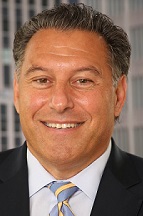The natural reaction any time regulators threaten a new regime of oversight is one of concern and apprehension. The overwhelming majority of PE fund managers already take pains to operate within the rules, and most go above and beyond what’s expected to provide transparency to LPs. Still, in the wake of the SEC’s sweeping proposal to enhance private fund reporting, many GPs will naturally feel a target is on their back. The proposal is just a starting point, and with feedback and consultation, the hope is that the regulations ultimately land in the right place.

Indeed, the Security and Exchange Commission’s February draft of its proposed reforms for private funds generated no shortage of feedback during the initial comment period, which was extended from April 11 to June 17. Perspectives analyzing every angle were shared from individual retail investors, institutions, fund managers, and even former regulators. The industry trade groups also weighed in. The initial feedback from the Managed Funds Association, for instance, took issue with the granularity and frequency of the new reporting guidelines as well as the potential prohibitions against disparate fund terms. In an op-ed published by Institutional Investor, the MFA president and CEO Bryan Corbett argued: “The SEC is effectively trying to inject itself into the middle of negotiations between sophisticated parties.” And in its comments, the Institutional Limited Partners Association emphasized the restoration of fiduciary duties was paramount; transparency is a positive, but not at the expense of ‘pro rata’ investor reporting. Similarly, the association emphasized that side letters should be considered an essential tool for LPs, many of whom would be unable to invest in the asset class without institution-specific requirements.
No doubt the additional reporting requirements will translate into higher operational costs and create work for fund managers. This is all but guaranteed, and efforts on the part of regulators should be made to avoid unnecessary red tape. There are also valid questions around what is, and what is not, appropriate or effective. These debates are being explored in depth and hashed out during the extended comment period. The goal is that the proposal evolves from its current form and reaches a compromise that facilitates transparency without placing an excessive operational burden on managers. It’s worth noting that every other time the industry has been hit with transparency demands, it’s been a precursor to significant asset growth.
The timing could even be considered advantageous, as the industry sets its sights on high-net-worth, mass affluent, and even “everyday” retail investors – the non-accredited kind. The first category of HNW investors, alone, represents a potential pool of capital Oliver Wyman predicts can reach $100 trillion by 2024.
Paradox? New regulations precede growth
The connection may not be obvious. In hindsight, though, stepped-up regulatory attention has been a precursor to growth. Consider the response of policymakers following the back-to-back scandals involving Bernie Madoff and Allen Stanford. While Dodd-Frank aimed to address certain systemic risks exposed during the 2008 credit crisis, many of the regulations also took aim at private capital. The Private Fund Investment Advisors Act, within Dodd Frank, forced any adviser with at least $150 million of AUM to register with the SEC. Form PF reporting obligations, similarly, can be traced back to Dodd Frank. While these rules weren’t popular and went through several iterations before being finalized, the sustained trajectory of asset growth over the past 10 years suggests these regulations did not stand in the way of capital formation.
This latest proposal from the SEC, however, would be more onerous to GPs, at least as currently proposed, altering everything from reporting and fund disclosures to fees and expenses. Among the highlights are new requirements around annual financial audits, including the auditor’s obligations to report certain events, such as a modified opinion, to the SEC. Managers would also be expected to document the annual review of compliance policies and procedures, while quarterly statements would detail fund performance (including total gross and net IRRs and MOICs, for both realized and unrealized performance); statements of contributions and distributions to LPs; and fund-expense tables incorporating all compensation paid to the adviser. The proposal also introduces new prohibitions that seek to eliminate or disclose perceived conflicts of interest, a lower reporting threshold for large advisers ($1.5 billion of AUM versus $2 billion, today), and revisions to Form PF reporting requirements.
Leverage the ecosystem
To be sure, this article represents a mere “fly by” as it relates to everything packed into SEC proposals and the industry reactions. While the scope of the regulations is intense, an ecosystem exists that can help managers absorb any new demands. Lawyers and accountants will guide managers on legal and reporting nuances; fund administrators can streamline disclosures and performance reporting; and there’s no shortage of independent valuation firms. For those who tap into their networks and leverage specialists to solve the back-office challenges, the new regulations can provide an opportunity.
Increased regulatory oversight was probably inevitable. SEC Chairman Gary Gensler noted that private funds collectively control $18 trillion in gross assets. Some have argued it is too big not to regulate. Yet some good common-sense regulation may open the way for the next stage of growth – beyond accredited investors.
Assuming some iteration of the proposed regulations does pass, the ramp-up period for compliance will be harried and aggravating. Yet the industry will endure, in part because private capital represents a compelling alternative for companies to fund growth, investors to diversify and capture alpha, and fund managers to partner with management and create value. This is why retail investors want access. Regulators, perhaps without realizing it, are facilitating it.
Robert Caporale is head of corporate development at Gen II Fund Services LLC in New York.


 If you do not receive this within five minutes, please try to sign in again. If the problem persists, please email:
If you do not receive this within five minutes, please try to sign in again. If the problem persists, please email: